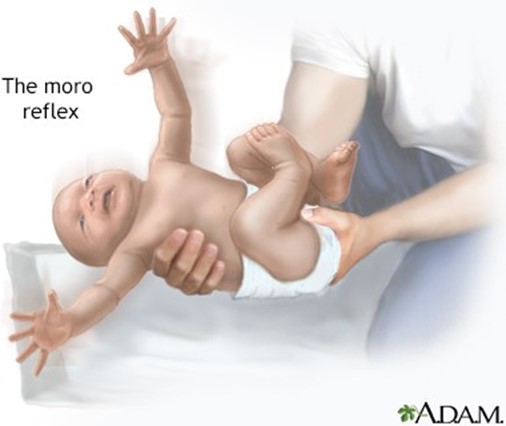A nurse is assisting in the care of a newborn born 1 hr ago who was delivered at 38 weeks of gestation.
A newborn who is 38 weeks of gestation is admitted to the newborn nursery following an emergency cesarean birth with respiratory distress syndrome (RDS). Apgar scores of 5 at 1 min and 7 at 5 min. The newborn received surfactant via an endotracheal tube and is currently receiving 3 Umin of oxygen via nasal cannula. Blood gases reveal respiratory acidosis.
Which action should the nurse prioritize in this situation?
Report the client's weight by the client's provider.
Select diagnostic studies followed by the primary health care.
Check brachial pulses for the client's respiratory status.
The Correct Answer is C
Choice A rationale:
Reporting the client's weight to the provider is not a priority in this situation. While weight is important, the immediate concern is the newborn's respiratory distress and the acidosis indicated by the blood gases.
Choice B rationale:
Selecting diagnostic studies for the primary health care is not the nurse's role. The primary health care provider will determine which diagnostic studies are needed based on the newborn's clinical presentation and assessment findings.
Choice C rationale:
Checking brachial pulses for the client's respiratory status is the appropriate action. In a newborn with respiratory distress, assessing peripheral perfusion, including brachial pulses, is crucial to monitor the circulation and oxygenation of tissues.
Nursing Test Bank
Naxlex Comprehensive Predictor Exams
Related Questions
Correct Answer is ["The medical term for the soft spot on a baby's skull is fontanelle (or fontanel)."]
Explanation
The medical term for the soft spot on a baby's skull is fontanelle (or fontanel). Fontanelles are gaps between the bones of the skull that allow for the baby's brain to grow and accommodate rapid brain development during infancy. There are typically two fontanelles in a newborn's skull: the anterior fontanelle (located at the top/front of the head) and the posterior fontanelle (located at the back of the head). These fontanelles are composed of connective tissue and remain open during the early months of life, gradually closing as the baby's skull bones fuse together over time. Healthcare professionals often assess fontanelles during routine physical exams of infants. The fontanelle's size and tension can provide valuable information about the baby's hydration status, intracranial pressure, and neurological development.
Normally, the fontanelles should feel relatively soft and flat, indicating proper hydration and brain development. If the fontanelles are sunken or overly tense, it may suggest dehydration or increased intracranial pressure, which requires further evaluation and management. The proper examination of fontanelles is an essential part of newborn care, and any abnormalities observed during assessment should be promptly reported to the healthcare provider for appropriate evaluation and intervention.
Correct Answer is ["A"]
Explanation
Choice A rationale:

The Moro reflex is a normal finding in newborns, including those born post-term. It is a primitive reflex that should be present and indicates a healthy neurological system.
Choice B rationale:
Vernix, a protective white substance that coats the skin in utero, is typically absent or minimal in post-term newborns due to its decreased production as gestation progresses. Therefore, it would not be expected in a post-term infant.
Choice C rationale:
Lanugo, the fine hair covering a newborn's body, is usually present in greater amounts in preterm infants. By the time a newborn is post-term, lanugo is typically sparse or absent, making it an unlikely finding.
Choice D rationale:
This maneuver assesses the flexibility of the newborn's joints. Post-term infants tend to have reduced flexibility and increased muscle tone, making this maneuver more difficult or restricted in this population.
Whether you are a student looking to ace your exams or a practicing nurse seeking to enhance your expertise , our nursing education contents will empower you with the confidence and competence to make a difference in the lives of patients and become a respected leader in the healthcare field.
Visit Naxlex, invest in your future and unlock endless possibilities with our unparalleled nursing education contents today
Report Wrong Answer on the Current Question
Do you disagree with the answer? If yes, what is your expected answer? Explain.
Kindly be descriptive with the issue you are facing.
